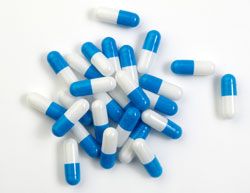Article
Addressing the Challenges of Oral Oncolytic Therapy
Author(s):
Oral oncolytics are frequently used in cancer treatment and they make up approximately 25% of the medications in the oncology pipeline

Oral oncolytics are frequently used in cancer treatment and they make up approximately 25% of the medications in the oncology pipeline. At the 36th Annual ONS Congress in Boston, Massachusetts, the ONS Chemotherapy Special Interest Group (SIG) hosted a presentation covering management strategies for patients taking oral oncolytics.
Advantages of Oral Agents
Oral agents provide a variety of benefits versus standard infusion chemotherapy. Patients self-administer the treatment, so it can empower them with an increased sense of control over their therapy. Self-administrating medication also translates into fewer clinic visits, which results in an overall shorter treatment time. Additionally, patients are managing their therapy at home or at work, so their cancer has a less disruptive effect on their everyday life.
Challenges of Oral Agents
The patient empowerment offered by oral oncolytics also introduces challenges. Self-management of the therapy triggers issues with under- or over-adherence. Side effects, including nausea, forgetfulness, and drowsiness, may lead patients to skip or decrease doses. Alternately, a belief that the treatment is not working may lead to independent dose increases.
Self-management also increases a patient’s responsibility for recognizing and reporting the side effects of the treatment. Side effects that are easily treated at an early stage can advance to dangerous levels if mismanaged or neglected.
The high expense of oral oncolytics also becomes a burden. The cost or lack of reimbursement can result in patients adjusting dosages to prolong a prescription.
Consequences of Nonadherence
Patient nonadherence to oral oncolytics presents several ramifications. To start, not following dosage requirements affects the efficacy of the treatment. This will likely cause disease progression, which can result in an unnecessary change in treatment. Taking the medication too close together or at the wrong time can also increase toxicities.
Nonadherence not only affects the individual patient, but it also impacts the healthcare system as a whole. Dosage mismanagement leads to increased consumption of healthcare resources through more physician visits and hospital stays.
Improving Adherence
A patient’s oncology team can improve adherence to oral agents by following the guidelines for safe administration of the medications that are outlined in the 2009 ASCO/ONS Chemotherapy Safety Standards. The ONS Chemotherapy SIG also had specific recommendations for both oncologists and nurses.
Oncologists
Oncologists can use several approaches to improve patient adherence to oral agents. Simplifying medication regimens facilitates adherence through decreased patient confusion. Listening to the patient and reinforcing adherent behaviors will also help. When patients have issues with costs or reimbursement, physicians should be able to answer their questions or refer them to additional resources.
Nurses
The starting point for oncology nurses with oral agents is educating themselves on the treatments and side-effect profiles. This will allow them to accurately identify patients who are appropriate candidates for the modality.
Educational interventions for patients starting oral regimens then become crucial. Patients must understand the proper use of the medications, the side-effect profile and its symptoms, and the consequences of nonadherence.
Monitoring patient adherence will also help. Nurses can develop and utilize tools to track and support patients. This will also facilitate early interventions, such as a change in dosing plan.
Finally, nurses can help patients with insurance coverage get reimbursed for the cost of these drugs. For those without coverage or whose coverage has maxed out, nurses can locate patient assistance programs (pharmaceutical companies or nonprofits) to help them obtain their oral medications.









